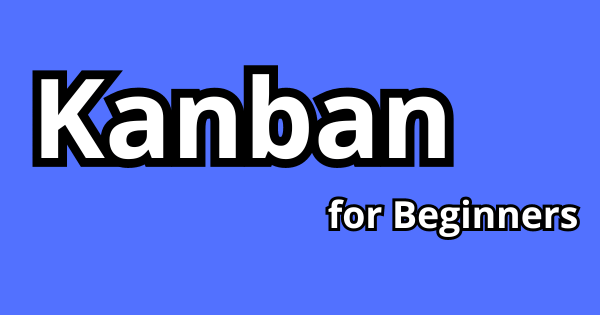What Is Kanban?: A Primer for Beginners
What Is Kanban – Kanban is a widely used method in Lean workflow management that is utilized to define, manage, and enhance services that involve knowledge work. Its primary purpose is to provide a visual representation of work, increase efficiency, and promote continuous improvement. By utilizing Kanban boards, work can be optimized across multiple teams, enabling the handling of even the most intricate projects within a single environment.
Originally utilized in manufacturing, Kanban has now been embraced by Agile software development teams and is gaining recognition among various business units in different industries.
As the popularity of Kanban grows, numerous questions arise, such as:
- What exactly is Kanban?
- What are the principles and practices of Kanban?
- What are the benefits of implementing Kanban?
To address these inquiries, here are the key aspects you should be aware of regarding this method and its practical application.
Kanban: A Concise Definition and Introduction
What Is Kanban? Definition kanban
The term “kanban,” derived from the Japanese language, refers to a visual board or sign and has been utilized to define a process since the 1950s. Initially introduced by Toyota, it served as a scheduling system for just-in-time manufacturing. Conversely, the capitalized term “Kanban” is commonly associated with the development of the “Kanban Method,” which was officially defined in 2007.
The Birth of Kanban
Originally, it emerged as a scheduling method for lean manufacturing, originating from the Toyota Production System (TPS). In the late 1940s, Toyota implemented “just in time” manufacturing into its production process. This approach signifies a pull system, where production is driven by customer demand rather than the traditional push practice of producing goods and pushing them into the market.
Their distinctive production system established the groundwork for Lean manufacturing, also known as Lean. Its primary objective is to reduce wasteful activities while maintaining productivity. The ultimate aim is to deliver greater value to the customer without incurring additional costs.
Kanban Method
The Kanban Method gained recognition in the early 2000s as key players in the software industry realized its potential to revolutionize product and service delivery. By leveraging advancements in computing technology and prioritizing efficiency, Kanban expanded beyond the automotive industry and found success in IT, software development, R&D, and other complex commercial sectors.
The development of the Kanban Method can be attributed to the collaborative efforts of influential figures in the Lean and Agile community, including David Anderson, Dan Vacanti, Darren Davis, Corey Ladas, Dominica DeGrandis, Rick Garber, and others. Their years of testing, experience, and dedication culminated in the emergence of the Kanban Method in 2007.
To implement your own Kanban system, you can start by creating a simple Kanban board with three columns: “Requested,” “In Progress,” and “Done.” When properly constructed, managed, and utilized, this board serves as a real-time information hub, highlighting bottlenecks and potential disruptions to ensure smooth workflow practices.
The 6 Core Principles of Kanban
The Kanban method is built upon six fundamental principles that drive change management and service delivery.
- Begin with the current state: Kanban emphasizes the importance of continuous improvement, starting with a thorough understanding of existing processes and workflows.
- Embrace incremental, evolutionary change: Rather than pursuing a large-scale transformation all at once, Kanban advocates for small, incremental changes that gradually accumulate over time.
- Foster leadership at all levels: Kanban is not limited to managers or team leads; it encourages everyone involved in the work to take on leadership roles and contribute suggestions for improvement based on their observations.
- Prioritize customer needs and expectations: Kanban places a strong emphasis on understanding and meeting the needs and expectations of customers, thereby enhancing the quality of services provided and the value delivered.
- Manage the work, not the workers: Kanban respects the existing roles and responsibilities of team members, empowering them to self-organize around the work at hand.
- Regularly evaluate the network of services: Kanban promotes collaboration and urges team members to share their insights, ideas, and feedback to enhance the work through periodic reviews of the entire network of services.
What Are the Kanban Practices?
The Kanban method relies on six essential practices to ensure a successful implementation:
- Visualizing the workflow: By creating a visual representation of the workflow, teams can easily identify bottlenecks, understand the flow of work, and make the process more transparent.
- Limiting work in progress: By setting limits on the amount of work that can be in progress at any given time, teams can prevent multitasking and improve their focus on completing one task at a time. This leads to increased efficiency and reduced lead time.
- Managing flow: Kanban aims to optimize flow by monitoring flow metrics, identifying and addressing bottlenecks, and continuously improving the workflow. This helps teams achieve a smooth and efficient workflow.
- Making process policies explicit: Clearly defining and communicating process policies ensures that everyone understands how work should be done. This reduces misunderstandings and promotes consistency in the team’s approach to work.
- Implementing feedback loops: Kanban emphasizes the importance of gathering feedback from customers, stakeholders, and team members. This feedback helps identify areas for improvement and allows teams to make necessary adjustments to their processes.
- Improving collaboratively: Kanban is a continuous improvement process that encourages collaboration and experimentation. Teams work together to identify and solve problems, continuously improve their processes, and adapt to better meet the needs of their customers.
By following these practices, teams can effectively implement Kanban and reap its benefits in terms of improved workflow, efficiency, and customer satisfaction.
Read Also: Scrum vs. Kanban, which one is better? this is the difference
Top 6 Benefits of Kanban
- The first State of Kanban report highlights that the primary motivations for implementing the Kanban method are the desire for improved work visibility and ongoing enhancement. Now, let’s explore additional advantages that come with utilizing Kanban.
- As per the initial State of Kanban report, the primary drivers behind adopting the Kanban method are the necessity for better work visibility and continuous improvement. Now, let’s delve into further benefits that arise from the utilization of Kanban.
- According to the inaugural State of Kanban report, the main factors driving the adoption of the Kanban method are the need for enhanced work visibility and ongoing improvement. Now, let’s uncover some additional advantages that stem from the utilization of Kanban.
- The first State of Kanban report highlights that the primary reasons for embracing the Kanban method are the requirement for improved work visibility and continuous improvement. Now, let’s shed light on some more benefits that arise from the utilization of Kanban.
- As stated in the initial State of Kanban report, the leading motivations for implementing the Kanban method are the need for enhanced work visibility and continuous improvement. Now, let’s explore further advantages that come with utilizing Kanban.
- According to the first State of Kanban report, the primary drivers for adopting the Kanban method are the desire for improved work visibility and ongoing enhancement. Now, let’s uncover additional benefits that arise from the utilization of Kanban.
What Are the Key Kanban Terminologies You Should Familiarize Yourself With?
Kanban, at its essence, is a methodology that aids in enhancing the smooth flow of value across your value streams, starting from the generation of ideas to delivering them to the customer. While it may appear as a simple approach to enhance your work processes, Kanban encompasses more than just visualizing your tasks. To truly reap the benefits of implementing this method, it is crucial to delve into the intricacies and acquaint yourself with the fundamental Kanban terminologies and artifacts.
Here’s a revised version of the article with a different style:
Explore this concise Kanban glossary to kickstart your journey into the world of efficient project management.
- Kanban Board:
At the heart of the Kanban methodology lies the Kanban board. It serves as a visual representation of all tasks in progress, with a minimum division into three columns – Requested, In Progress, and Done, each symbolizing distinct stages in the workflow. - Kanban Card:
Acting as the carriers of work items through the Kanban board, Kanban cards provide essential details about tasks, including descriptions, deadlines, sizes, assignees, and more. - Columns:
Vertically splitting the Kanban board, columns represent various stages in the workflow. While the default columns are Requested, In Progress, and Done, the complexity of tasks may lead to the creation of additional sub-columns within these stages. - Swimlanes:
These horizontal divisions on a Kanban board help segregate different types of work, allowing teams to visually organize similar tasks and maintain a cohesive workflow. - Cycle Time:
The cycle time commences when a task enters the “in progress” stage, marking the actual initiation of work on that task. - Lead Time:
Unlike cycle time, lead time begins when a new task is requested, regardless of whether active work has started. It concludes when the task exits the system upon completion. - Throughput:
Throughput measures the number of completed work items moving through a system or process within a specific timeframe. It serves as a crucial indicator of your team’s productivity over time. - Work in Progress (WIP):
WIP represents the volume of ongoing work that is yet to reach completion. - WIP Limits:
Implementing WIP limits involves restricting the number of tasks a team can simultaneously engage in. This strategy helps prevent overburdening and minimizes context-switching. - Classes of Service:
These are a set of policies aiding Agile teams in prioritizing work items and projects effectively. - Kanban Cadences:
Referring to periodic meetings, Kanban cadences drive evolutionary change and ensure “fit for purpose” service delivery. - Kanban Software:
This term pertains to digital systems facilitating the practical application of Kanban practices and principles. It caters to teams and organizations of all sizes, promoting efficient project management.
Kanban in Brief
Kanban goes beyond mere sticky notes on a wall. To truly grasp Kanban, one must embrace its philosophy and apply it to their daily work. By understanding and resonating with its core principles, the practical transition becomes logical and even inevitable.
By visualizing workflow, setting WIP limits, managing flow, ensuring explicit policies, and continuously improving, your process will surpass your expectations. Remember to incorporate regular feedback loops, as all these elements combined will unveil the true power of Kanban.
In Summary
While initially challenging to learn, now that you understand Kanban, you can fully leverage its main benefits:
- Physical and digital Kanban boards aid in visualizing your work.
- Kanban is easy to adopt; simply start with what you already have.
- WIP limits empower you to enhance efficiency.
- The principles and practices of Kanban offer a gradual path towards agility without disrupting current processes.






